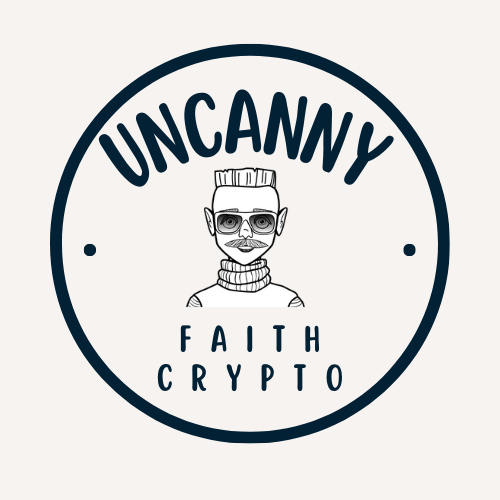Cryptocurrency and blockchain technology are evolving at breakneck speed, and one key enabler of this evolution is the bridge protocol. By facilitating cross-chain communication, asset transfers, and interoperability, bridge protocols have become the backbone of the decentralised finance (DeFi) ecosystem and an integral aspect of the cryptocurrency world. But what will bridge protocols look like in 2025, and how will they reshape the cryptocurrency landscape?
In this article, we’ll dive into the trends, challenges, and untapped potential of bridge protocols. Whether you’re a blockchain enthusiast, an investor, or someone simply curious about the future of cryptocurrency, we’ll provide a deep exploration into this emerging space while addressing the critical question: why are bridge protocols poised to dominate the blockchain narrative in 2025?
What Is a Bridge Protocol and Why Does It Matter?
Before we dive into future trends, let’s first understand what a bridge protocol is.
In simple terms, bridge protocols are tools that enable communication between two separate blockchain ecosystems. They allow users to transfer tokens, assets, or data seamlessly between chains without needing a centralised intermediary. Think of a bridge protocol as a digital "crossing" that lets traffic flow freely between islands (blockchains) that typically operate in silos.
For example, if you want to move Bitcoin (BTC) to the Ethereum network for use in decentralised applications (dApps), you would use a bridge protocol such as RenBridge or WBTC. These bridges wrap your Bitcoin into an Ethereum-compatible token, allowing it to be used across the Ethereum network.
Why Are Bridge Protocols Important?
Bridge protocols solve one of the most significant issues within blockchain technology: interoperability. By connecting disparate blockchains, they enable the following:
- Enhanced Liquidity: Assets can flow across multiple chains, increasing liquidity in DeFi ecosystems.
- Scalability: Users can move assets to more scalable blockchain networks to save on fees and improve transaction speed.
- Greater Utility: Bridge protocols unlock new use cases for digital assets by making them compatible with a wider range of platforms.
- Cross-Chain Innovation: Developers can build applications that leverage the benefits of multiple blockchain ecosystems.
As blockchain continues to fragment into specialised ecosystems, the role of bridge protocols will become even more vital.
Key Trends That Will Define Bridge Protocols in 2025
As we look ahead to 2025, several exciting trends are emerging that promise to revolutionise bridge protocols and redefine their role in reshaping the cryptocurrency landscape. Here are the key trends to watch:
1. Rise of Native Bridge Solutions
In 2025, we expect to see an increased emphasis on native bridge protocols developed by blockchain ecosystems themselves. Historically, most bridge solutions have been third-party services, such as Polygon Bridge or Wormhole. However, major blockchains like Ethereum, Solana, and Polkadot are increasingly developing their own bridges to ensure tighter security, better performance, and smoother compatibility.
Take, for instance, Polkadot’s Cross-Consensus Message Format (XCM) — a native interoperability tool designed to facilitate seamless communication between parachains. Native bridge solutions provide blockchain networks with greater control over how assets and data are transferred, reducing reliance on external protocols that may introduce security vulnerabilities.
Key Takeaway:
By 2025, we anticipate that leading blockchain ecosystems will integrate native inter-chain functionality into their networks, marking a shift away from third-party solutions.
2. Increasing Focus on Security
One of the biggest challenges for bridge protocols today is security, as bridges have become frequent targets for hacks. In 2022 alone, breaches across several bridges led to losses of over $1 billion, underscoring just how vulnerable they can be. As bridge protocols gain greater adoption in 2025, ensuring higher levels of decentralisation, auditing, and zero-trust models will be pivotal.
New technologies such as multi-signature wallets, zero-knowledge proofs (ZKPs), and threshold encryption are expected to be widely adopted across bridge protocols to address these challenges. Moreover, "bug bounties" and community-driven auditing may become standard practice, incentivising ethical hacking to identify vulnerabilities before bad actors can exploit them.
Expert Insight:
Blockchain security experts predict that zero-knowledge rollups will dominate bridge security by 2025, enabling trustless interoperability with minimal risk.
3. The Role of Artificial Intelligence (AI)
AI is touching nearly every industry, and bridge protocols are no exception. By integrating AI, bridge protocols in 2025 will become smarter and more efficient. Imagine AI-powered systems that can:
- Optimise Routing: Automatically route transactions to the fastest and cheapest networks.
- Detect Fraud: Identify suspicious activity before a breach can occur.
- Adapt Dynamically: Learn from past usage patterns to improve asset compatibility and reduce transfer times.
For example, advancements in AI could lead to bridges that dynamically "self-heal"—automating fixes for downtimes or malfunctions. This would drastically improve the reliability and trustworthiness of cross-chain solutions.
4. Regulation and Compliance: The Inevitable Shift
As cryptocurrency becomes more mainstream, so too does regulatory interest. By 2025, we’re likely to see stricter compliance requirements for bridge protocols, particularly in jurisdictions like the UK, the US, and the EU. Government agencies are keen to deter money laundering and other illicit activities, and bridges have historically been used to bypass compliance mechanisms.
Prediction:
Bridge protocols will incorporate built-in compliance features, such as Know Your Customer (KYC) and Anti-Money Laundering (AML) checks, to align with regulations. While this could limit anonymity, it may also build trust among institutional investors who value compliance and legitimacy.
5. Adoption of Cross-Chain Governance
In 2025, governance will play a major role in driving bridge protocol innovation. Traditional protocols often have centralised decision-making processes, leading to slower development and lower transparency. The adoption of cross-chain decentralised autonomous organisations (DAOs) is set to change this trend.
DAOs will be used to govern bridge protocols democratically, with community stakeholders voting on important decisions like fee structures, upgrades, and security measures. This not only decentralises decision-making but also fosters trust among users.
Real-World Example:
Imagine a DAO where token holders from Ethereum and Binance Smart Chain (BSC) collaboratively decide on the governance of a shared bridge protocol.
6. New Use Cases and Broader Adoption
As blockchain technology matures, bridge protocols will expand beyond cryptocurrency to serve additional use cases. Here are some areas where bridges in 2025 will shine:
- Metaverse and NFTs: Cross-chain NFT bridges will allow unique digital assets to be used across multiple virtual worlds.
- Supply Chain Data: Bridges will enable transparent, inter-chain communication of supply chain data, improving traceability.
- Enterprise Integration: Businesses will use bridge protocols to integrate blockchain solutions into their existing infrastructure, driving mass adoption.
Challenges to Overcome
While the future of bridge protocols is bright, several challenges must be addressed to achieve the full potential of interoperability:
- Scalability: As the demand for cross-chain solutions grows, bridge protocols must handle increased volumes without compromising speed or cost.
- Environmental Impact: Energy-efficient bridge protocols will be crucial as sustainability becomes a more significant concern.
- User Experience (UX): Simplifying user interfaces and automating complicated processes will be key to driving mainstream adoption.
Actionable Tips for Investors and Developers
If you’re looking to capitalise on the bridge protocol revolution in 2025, here are some tips:
- Do Your Research: Look for bridge protocols with strong communities, robust security measures, and proven track records.
- Diversify Investments: Consider investing in multi-chain ecosystems poised to benefit from widespread bridge adoption.
- Stay Informed: Regulatory changes can significantly impact bridge protocols — keep up-to-date with compliance requirements in key markets.
- Experiment and Build: For developers, understanding bridge protocol APIs and participating in open-source projects is a great way to get ahead.
Frequently Asked Questions (FAQs)
Q1: What are the most commonly used bridge protocols today?
Popular bridge protocols include Wormhole, Polygon Bridge, and RenBridge, though newer options continue to emerge.
Q2: How are bridge protocols monetised?
Bridge protocols often charge transaction fees or incorporate tokenomics models where users must hold native tokens to access certain features.
Q3: Are cross-chain bridges safe?
While security continues to improve, no system is entirely immune to risks. The industry is working aggressively to address vulnerabilities with cutting-edge solutions.
Final Thoughts: The Bridge to 2025 and Beyond
Bridge protocols represent the convergence of innovation, utility, and necessity in the cryptocurrency landscape. By 2025, these tools will not simply connect blockchains; they will serve as the foundation for a truly interoperable Web3 ecosystem. Whether through improved security, AI integration, or regulatory alignment, bridge protocols are set to reshape how we think about digital assets and decentralised systems.
As we glance towards the horizon, one thing is clear: the bridge to the future of cryptocurrency is being built today. The question is, are you ready to cross it?
For more insights into cryptocurrency trends, stay updated with our blog. Don’t forget to share this article if you found it helpful!
Suggested Visual Content:
- Infographic showing the evolution of bridge protocols from 2020 to 2025.
- Diagram of how a bridge protocol works, complete with security layers.

